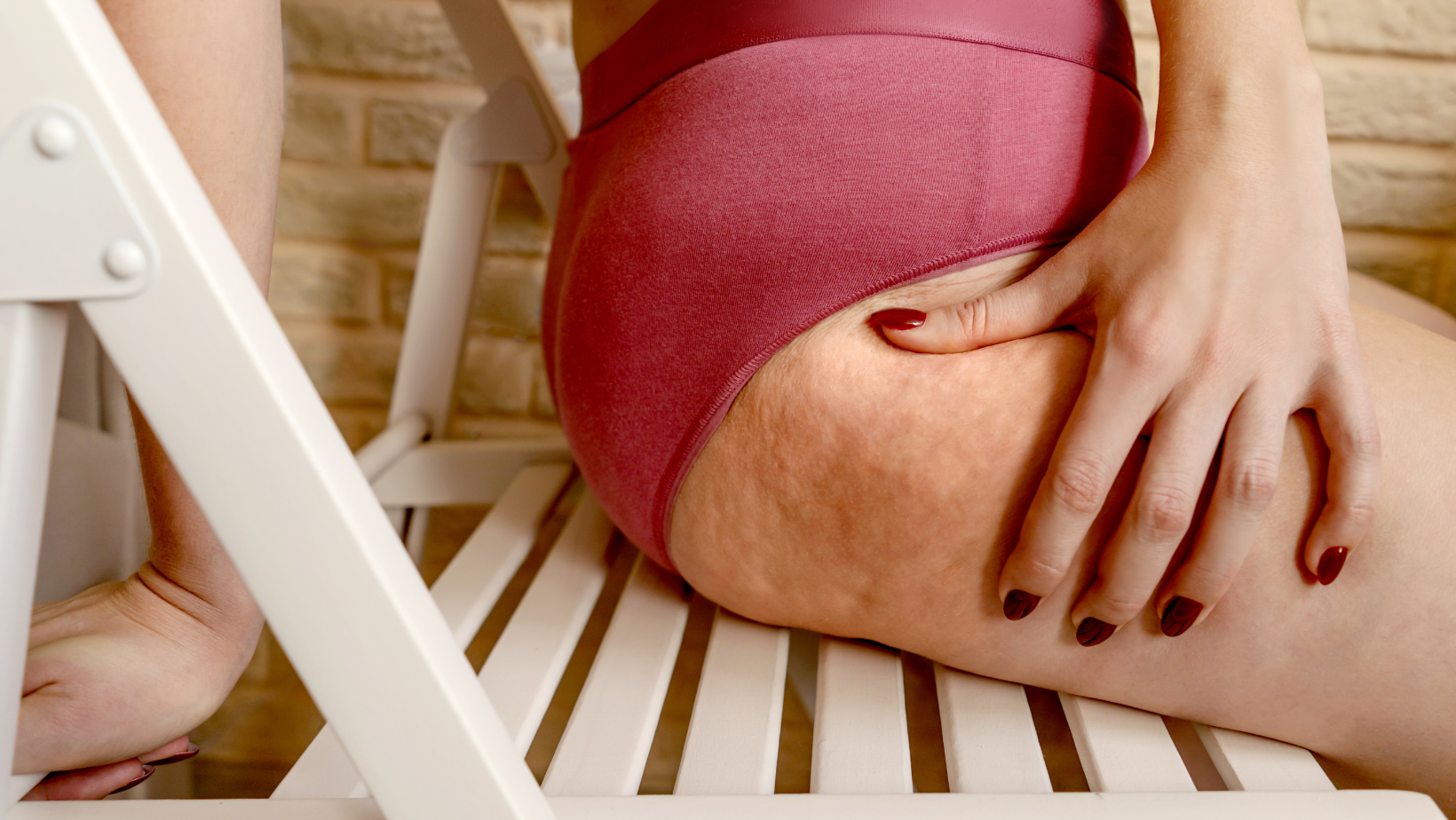Category
Cellulite is a common cosmetic concern that affects many individuals,

Have any questions?
If you have any questions, feel free to contact us at [email protected]. A member of our support team will help you shortly.
Share this blog
Fatigue
Energy
Stress
Sleep
Cellulite is a common cosmetic concern that affects many individuals, primarily women, causing dimpled or lumpy skin, especially on the thighs and buttocks. While cellulite is not a medical condition, its appearance can impact self-esteem and body image. Understanding the causes and exploring effective treatment options can help individuals make informed decisions about managing cellulite.
Genetics plays a significant role in the development of cellulite. If your parents or close relatives have cellulite, you may be more prone to developing it as well.
Hormonal fluctuations, particularly during puberty, pregnancy, and menopause, can contribute to the formation of cellulite. Estrogen, insulin, noradrenaline, and thyroid hormones play a role in cellulite development.
The structure of connective tissues under the skin can affect the appearance of cellulite. Fat cells may protrude if the connective tissues are rigid and inflexible, leading to characteristic dimpling.
A sedentary lifestyle, poor dietary habits, and lack of exercise can contribute to excess fat accumulation and cellulite development. Maintaining a healthy lifestyle is crucial for managing cellulite.
While cellulite can affect individuals of all body types, excess body fat can exacerbate its appearance. Losing weight through a healthy diet and regular exercise may help reduce cellulite.
Various over-the-counter creams and lotions claim to reduce the appearance of cellulite. Ingredients like caffeine, retinol, and antioxidants may temporarily tighten the skin and improve its texture.
Massaging the affected areas or dry brushing the skin may stimulate blood flow and lymphatic drainage, potentially reducing the appearance of cellulite. While these methods may offer temporary improvement, their long-term effectiveness is debated.
Non-invasive procedures like laser therapy and radiofrequency treatments can target cellulite by heating the skin and stimulating collagen production. These procedures aim to tighten the skin and reduce dimpling.
Various at-home devices, such as suction cups and massage rollers, claim to reduce cellulite. While user experiences vary, the scientific evidence supporting the efficacy of these devices is limited.
Mesotherapy involves injecting vitamins, minerals, and amino acids into the skin to reduce fat and improve cellulite. The safety and effectiveness of this procedure are still under investigation.
Surgical interventions like liposuction and subcision can be considered for more drastic results. Liposuction removes excess fat, while subcision involves cutting the connective tissue to release dimples. These procedures carry risks and require careful consideration.
Adopting a balanced diet, staying hydrated and engaging in regular physical activity can help prevent weight gain and reduce the risk of cellulite development.
Building muscle through strength training can improve skin tone and reduce the appearance of cellulite. Targeting specific muscle groups, especially in the thighs and buttocks, can be beneficial.
Proper hydration is essential for overall skin health. Drinking adequate water helps keep the skin hydrated and may contribute to a smoother appearance.
Rapid weight loss or yo-yo dieting can contribute to collagen breakdown and worsen cellulite appearance. Aim for gradual, sustainable weight loss if needed.
Protecting the skin from harmful UV rays by using sunscreen can help maintain collagen production and prevent premature skin aging, potentially reducing the appearance of cellulite.
While cellulite is a common concern, it's essential to approach its management with realistic expectations. No single treatment offers a guaranteed solution, and the effectiveness of various interventions can vary among individuals. Adopting a healthy lifestyle, including a balanced diet and regular exercise, remains fundamental to cellulite prevention and management. Before pursuing any specific treatment, individuals should consult with healthcare professionals to discuss their options, weigh the potential risks and benefits, and make informed decisions based on their unique circumstances.